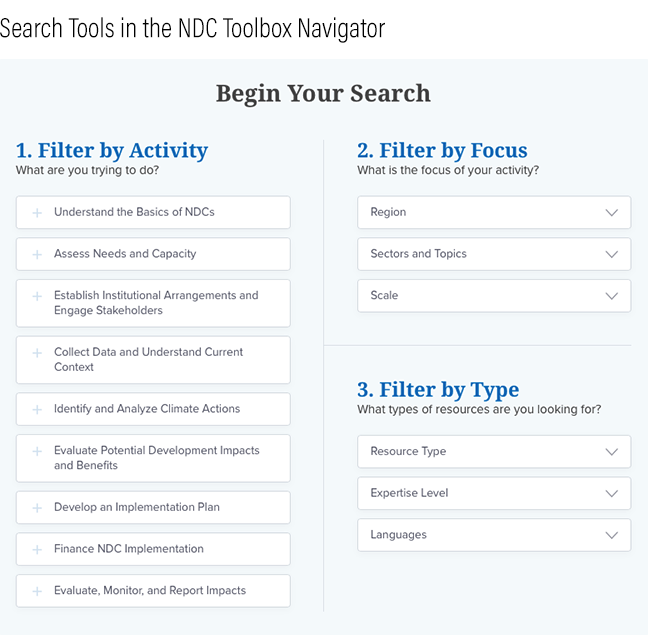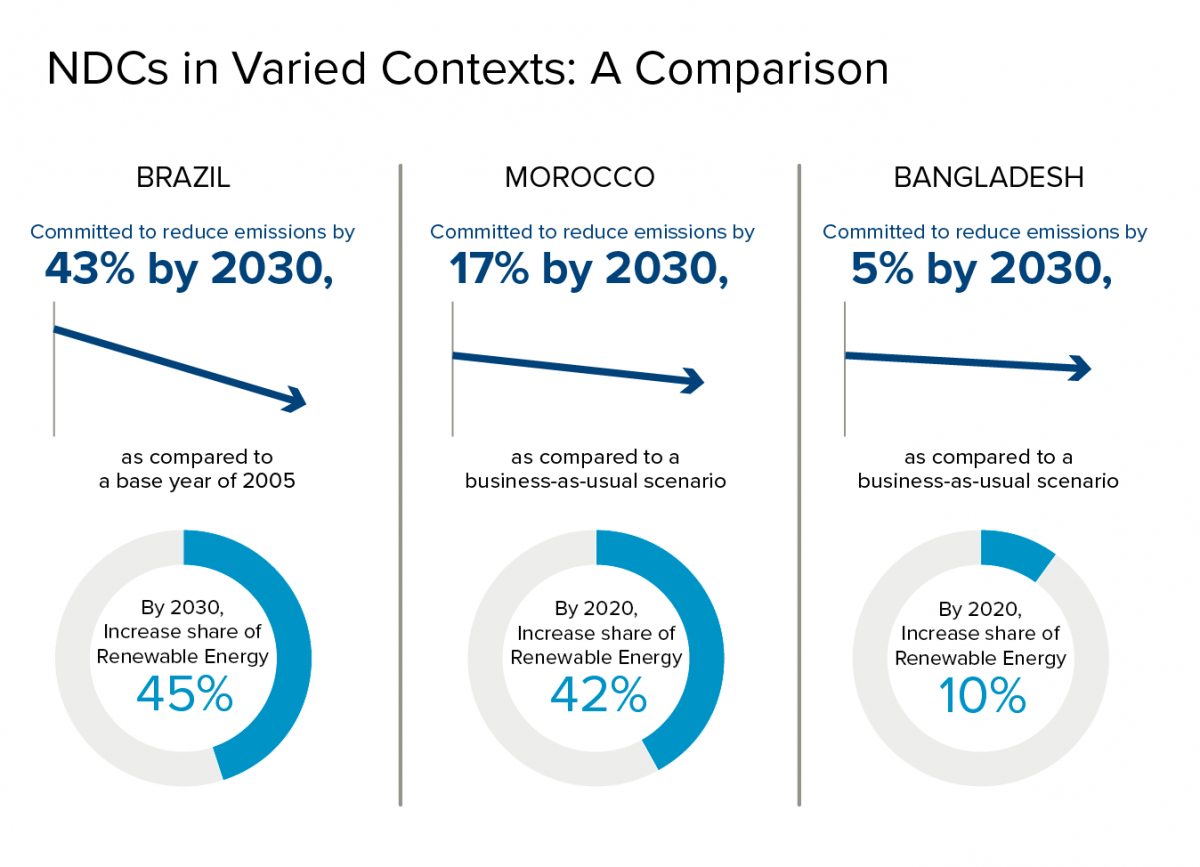New Database Can Help Countries Chart a Course for Implementation of NDCs

The NDC Toolbox Navigator
By Emily Mangan and Mike Kozar
As countries pivot toward the implementation of the Paris Agreement, many will face shared challenges in translating their Nationally Determined Contributions (NDCs) into climate action. While every country’s path will be different, they all have a clear need for analytical tools and resources to overcome these challenges. The NDC Toolbox Navigator was designed to meet this need. The Toolbox Navigator acts as a manual for practitioners to chart their country’s path under the Paris Agreement by providing access to hundreds of tools and resources that can help countries reach specific NDC targets.
Launched in May and developed by the NDC Partnership, The Toolbox Navigator is a comprehensive, curated database organized around nine key activities associated with NDC planning and implementation. Resources are grouped in categories such as “Assess Needs and Capacity,” “Establish Institutional Arrangements and Engage Stakeholders,” or “Evaluate, Monitor or Assess Impacts,” ensuring that search results are relevant to the user. Additional sub-categories allow users to hone in on an activity, ranging from “Adaptation Monitoring and Evaluation” to “Develop Funding and Project Proposals” and “Build a Greenhouse Gas Emissions Inventory.” Tools are also searchable by region, sector or language. Whether a country is pursuing mitigation or adaptation goals, the Toolbox Navigator can generate custom and relevant results for a wide array of NDC targets.
Designed for maximum versatility, the Toolbox Navigator allows users either to create their own toolkit or to find the right tool for a specific task, depending on their unique country context. For example, Brazil, Ghana and Morocco, all members of the NDC Partnership, have all committed to scaling up renewable energy as a key mitigation activity. However, each country differs in terms of the technical capacity and institutional readiness it possesses. The Toolbox Navigator offers the tailored resources that can help each move from commitments to actions.

One Site for Essential NDC Tools
Currently, practitioners crafting implementation plans must sift through dozens of databases and thousands of webpages to find the information they need. The Toolbox Navigator serves as an optimal starting point, saving time and effort by offering a well-curated set of resources in one place. Organizing tools around activities also allows users to be intentional in how they build their paths to action, providing the right tool for each step. Many countries may find that a single project related to NDC implementation, such as scaling up renewable energy or building climate resilience, will require multiple steps―for example, engaging stakeholders and the public, conducting a feasibility study, and developing an implementation plan. The Toolbox Navigator easily allows countries to find resources, regardless of their project goals.
The Toolbox Navigator also allows users to share what they have learned through Experience Profiles, which, when available, can help users better understand real-world applications of tools and the context in which they have been used. In one profile, the Assistant Director of the Maldives’ Ministry of Environment and Energy writes of the challenges and successes involved in using a tool to explore mitigation options to achieve emissions reductions. This knowledge sharing will be critical to realizing climate action at the international level.
While the NDCs set goals, they did not set paths. It is up to each country to chart a course to reach its targets based on its unique situation and capabilities. Over time, many countries will find they have set similar goals to their neighbors; many countries will realize they face similar challenges. And many countries will need to fill technical and institutional gaps to reach the commitments set out under the Paris Agreement. The NDC Toolbox Navigator offers a unique, activity-oriented interface to help practitioners take action, overcome obstacles, and most critically, accelerate progress towards ambitious climate goals.
